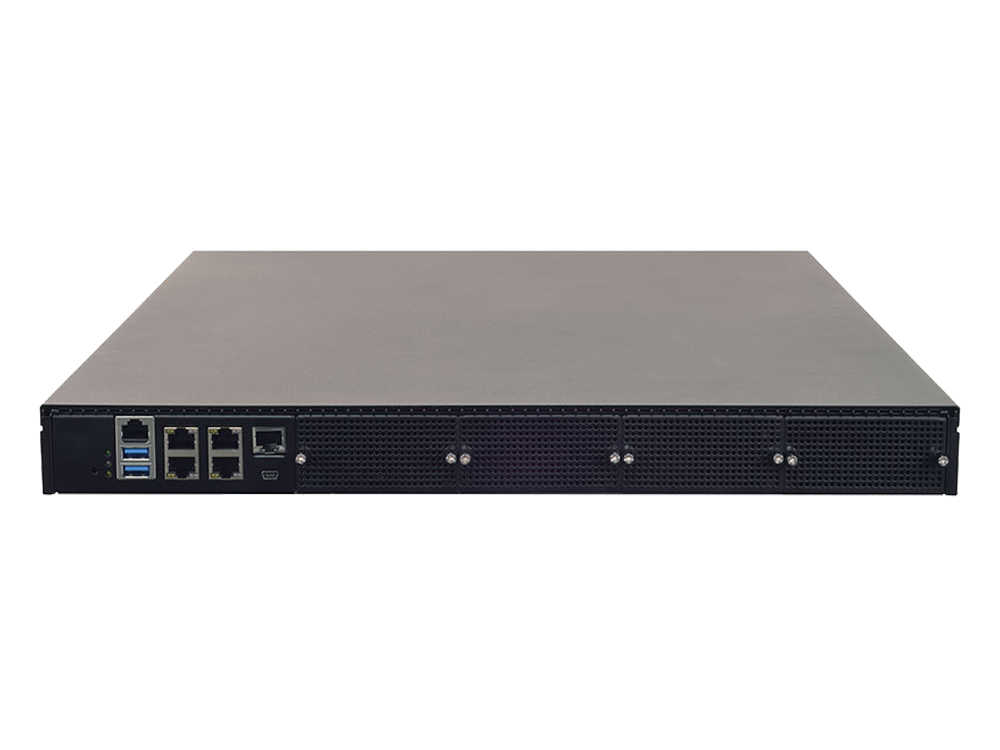As the demand for network bandwidth continues to accelerate, telecom operators are constantly challenged to meet client needs driven by video streaming, additional devices, and the cloud. Carriers can now meet those needs with netElastic Virtual Broadband Network Gateway (vBNG) software and white box servers from Lanner.
The overwhelming growth in internet traffic shows no signs of slowing down. The good news for service providers is consumers want and will pay for high bandwidth services. The bad news is accelerating demand for more bandwidth is putting pressure on broadband providers to repeatedly upgrade their network infrastructure.
Additionally, to grow revenue and remain competitive, carriers must continue to add advanced services such as triple-play and quad-play bundles, home security and surveillance, and public hotspots, among other services, putting further stress on existing network infrastructure.
Unfortunately, most traditional BNGs are built on proprietary hardware platforms that come with high costs and limited scalability. Traditional BNGs also encourage over-provisioning, which results in large upfront costs that aren’t matched by customer revenue. Thus, carriers are challenged to increase network scalability without having to overprovision network hardware or perform a forklift upgrade to meet exploding demand for both new and existing services.
The Solution: netElastic Virtual BNG
Unlike traditional BNGs, netElastic uses white box platforms from hardware manufacturers like Lanner for greater scalability, flexibility, and lower costs. netElastic vBNG is also designed to deliver unmatched performance with a highly optimized data plane and patented packet processing techniques. vBNG separates the control plane and data plane, with the control plane running the network operating system on a virtual machine containing a comprehensive suite of network service functions. The data plane runs the packet-forwarding engine, enabling line-rate data transfer.
Both the control plane and data plane can scale up/down to meet performance needs, and they can run in different hosts to take advantage of CPU cores to maximize performance and scalability. The netElastic vBNG data plane can also be expanded across multiple hosts to obtain the performance of dedicated hardware BNGs, while still benefiting from the greater flexibility and lower-costs of a virtualized solution.
vBNG is deployed at the subscriber network edge, in the same fashion as traditional BNG or BRAS. It controls subscriber access to the network, while performing management functions such as authentication, authorization, and accounting (AAA), access security, policy management, and Quality of Services (QoS). The diagram below shows a standard deployment of vBNG at the first aggregation point in the subscriber access network.

Robust Subscriber Management Capability
vBNG’s advanced subscriber management capabilities lower operational costs and accelerate time to market by providing flexibility for access, authentication, and QoS offerings. vBNG is designed to support high concentrations of subscribers and supports all common BNG access features such as PPPoE and IPoE, and also supports subscriber IP address management functions such as DHCP, DHCP Proxy, DHCP Relay, and DHCP Option 60. Each single control plane can support up to 128,000 users concurrently and throughput can be scaled by expanding the data plane across additional nodes as necessary.
High Performance and Throughput
netElastic vBNG leverages Intel’s Data Plane Development Kit (DPDK) and Single Root IO Virtualization (SR-IOV) coupled with netElastic optimized code to enhance forwarding performance. vBNG also takes advantage of the ever-increasing power of Lanner white box servers to provide the elastic scalability that carriers need. vBNG delivers up to 160Gbps throughput on a single server and can be scaled to support multi-terabit services. The data plane can also be scaled-out across multiple servers to increase total bandwidth capacity.
Lanner Whitebox Solutions
To achieve the true potential of virtual broadband network gateway (vBNG), Lanner’s whitebox server NCA-5520 is designed to address the scalability and performance bottlenecks of today’s hardware or software BNGs.
NCA-5520 is an 1U whitebox server powered by 2nd Generation Intel® Xeon® Processor Scalable Family, Intel® C626/C621 chipset and up to 320 GB DDR4 memory at 2,666 MHz to deliver superior computing performance and virtualization capability. In fact, driven by enterprise-optimized processors for multi-VM/multi-cloud applications, NCA-5520 offers ultra-high core counts and Intel® Optane™ DRAM technology to deliver nearly 4.2 times higher packet throughput, 77% increase in packet processing and 1.5 times higher memory bandwidth.
Aside from the hardware optimization, NCA-5520 also leverages the technological benefits of Intel® Deep Learning Boost, Intel® QuickAssist Technology (QAT) and AVX-512 VNNI (Vector Neural Network Instruction) to boost the processing capability in emerging workloads for A.I, IoT and enhanced cryptographic applications.
Regarding I/O configuration, NCA-5520 provides four RJ-45 Gigabit Ethernet ports or four 10G SFP+ ports, as well as four NIC module expansion slots to enhance the bandwidth. For high-availability applications, NCA-5520 comes with four swappable cooling fans and two power supply units (PSUs).







